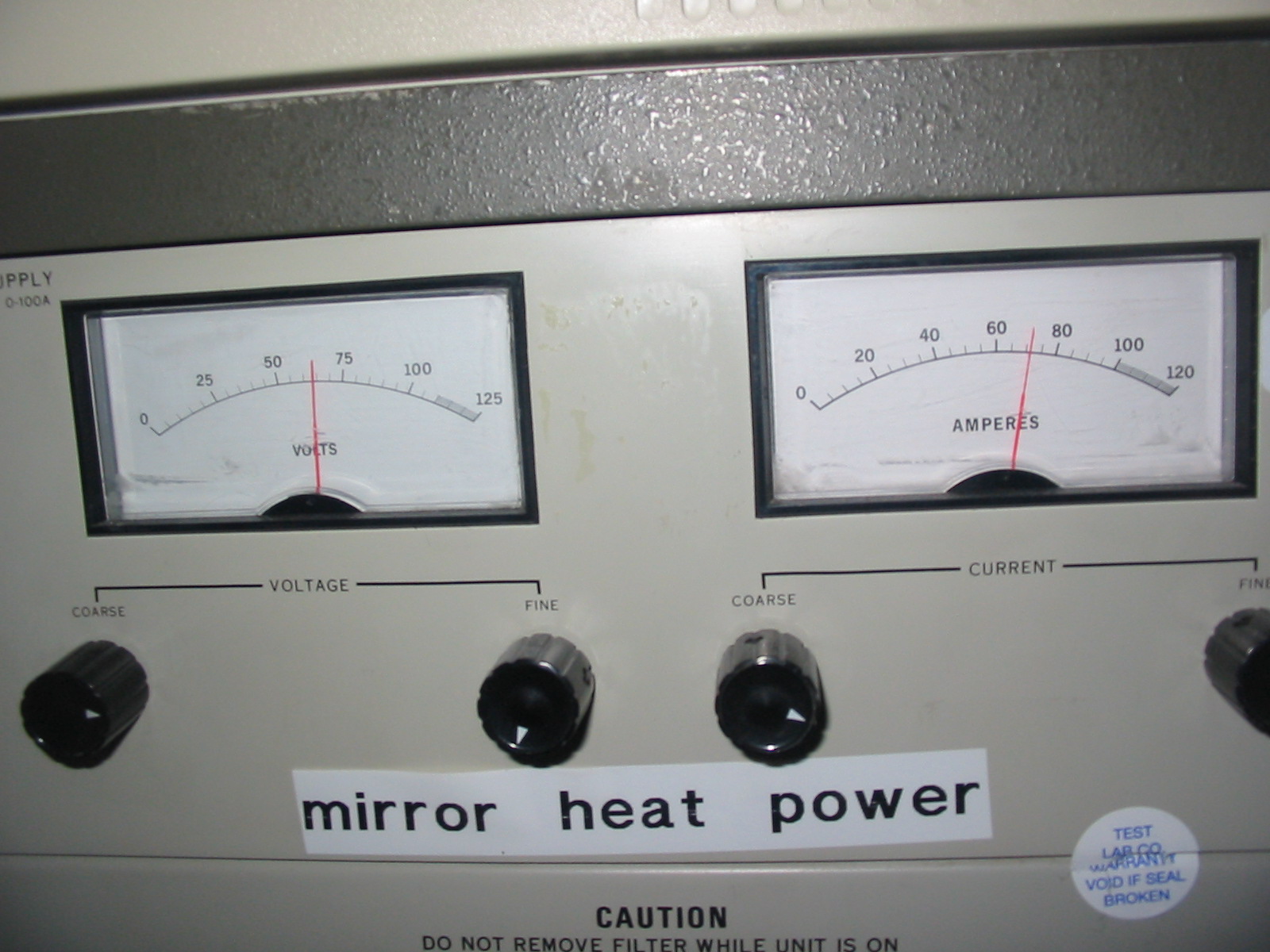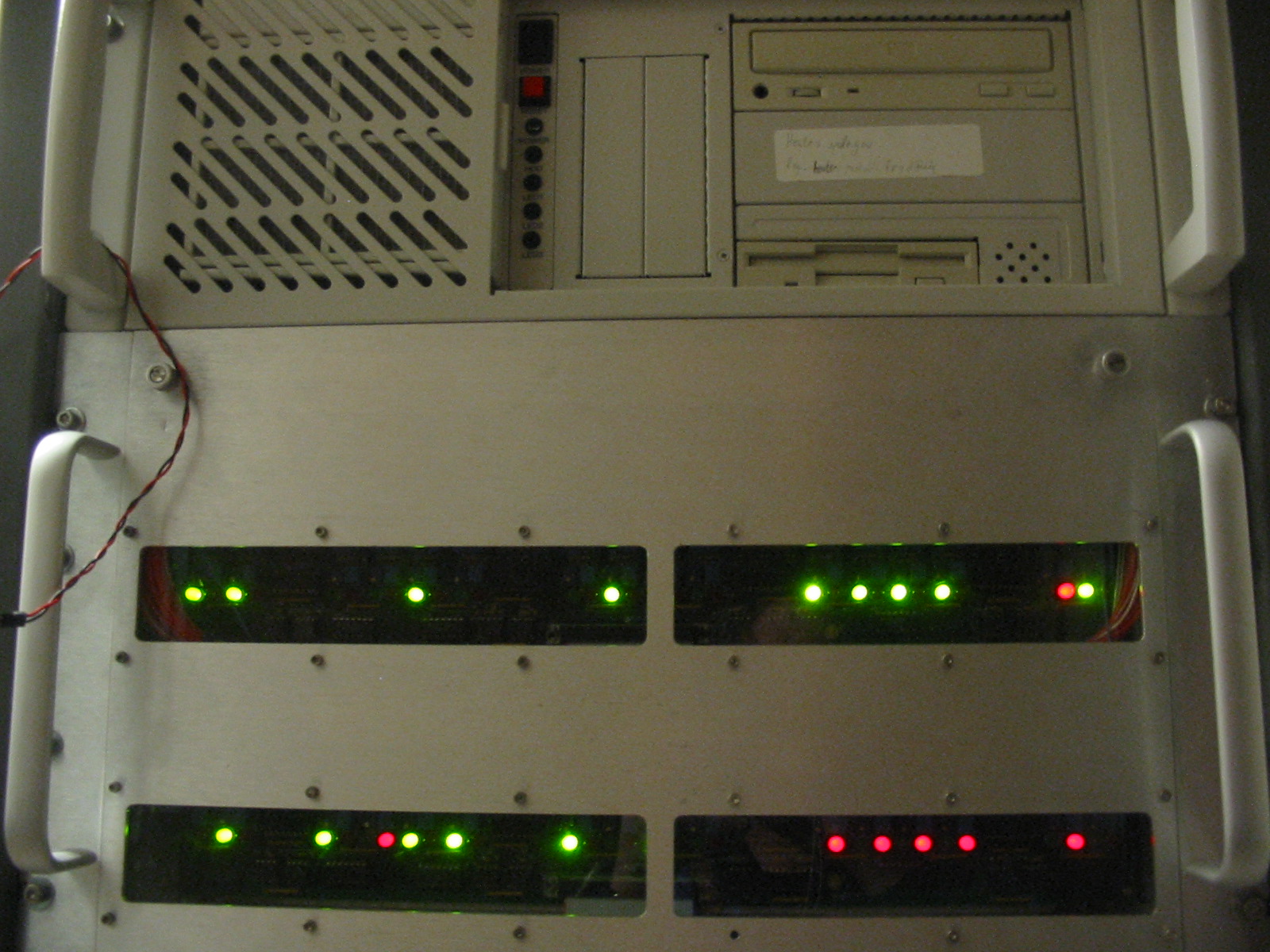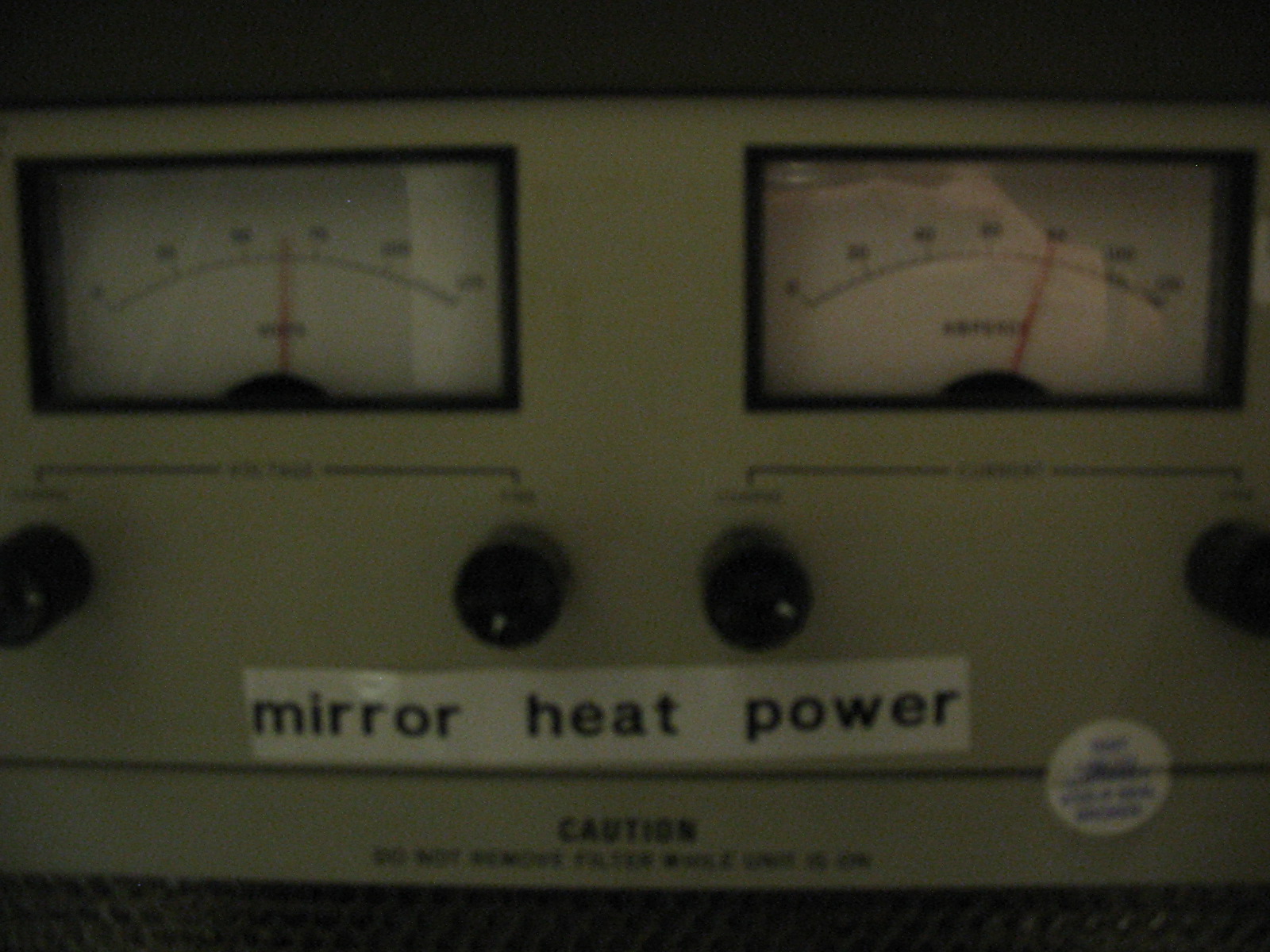Giles,
this e-mail is in html format and you should be
able to see all the feature using outlook or saving it as an html page that
could be directly attached to the acbar web page for your convenience and future
reference. However, it should be possible to see it by text-mode ordinary mail
client, also if some features will be disabled. Let me know if you like this
way.
I performed 2 different tests:
1) system restarting
2) "martin" heater pc
shutdown
I hope the pictures will help all of you to better
understand the problem.
1) system restarting
as expected the system drive a lot of current at
startup (Tambient = -67 F) as lot of heat is needed to
reheat the system:
time V* I
hh:mm
00:00 61 V 70
A
00:20 61 V 47
A
01:00 61
V 10 A
*voltage directly measured on the chassis
outlet with the fluke
After 1 hour the current stabilizes into a narrow
range accordingly to the heat requirements of the various subsystems. This is a
picture of power supply monitor at startup (not very exciting, just to
let you understand what I'm talking about and for the record...):
Fig. 1
The awg 4 silicon cables (+ and gnd) connecting the
chassis with the power supply overheat a little bit in this condition. The cable
is an AWG 4, with two conductors for each polarity.
Fig.
I esteemed about 105-110 F (40-45 C) in this
conditions. However, as you can see the cable is safe till 194 F (90
C).
The outlet distributing the power heats a little
bit more. However, after tightening all the screws encircled in red, the
overheating reduced. This confirm the suspect that there was a loose
connection.
Fig. 3
The fan is pretty effective in improving the
cooling of the area in "critical" situations.
It is puzzling why the cyan and white cables,
probably awg 14-16 or close (I can't really tell), visible in next
pictures
Fig. 4
are not overheat much worst. Maybe the insulation
is a much worst thermal conductor.
Note the "insulation" I
added (a sheet of rubber) to avoid possible contact between the PC case and the
cable in case of further overheating of the shrinking tube. This has been, I
think, the worst risk. To take the pictures I removed some more insulation from
the cable ("shrinking tube [...]" that I added after
the original shrinking tube peeled off after the overheating.
1) "Martin" heater PC
shutdown
As soon as the heater PC is switched off (and not before) the system get
apparently completely out of control.
The leds situation is as follows:
Fig. 5
not corresponding to the normal condition as all the green lights
slowly switch off, while in standard conditions only a few of them switch off
and on time by time. This means in my humble opinion that the electronics is
still measuring the correct temperatures and that seea the various subsystem
overheating. The red lights remain as they were. Note the cable that I removed
from the watchdog connector on the left side of the picture as for Martin
instructions.
However, this is the power supply condition at
same time:
Fig. 6
The current readout is 80 A and apparently remains
like that forever. In this condition, the silicon awg 4 cable get hotter, how
much is difficult to say, however well into the allowed temperature range. I
haven't kept the system in this conditions for longer than 10-15
minutes, but in the past I experienced temperature really
hot, probably of the order of 140 F at the level of the outlet.
After tightening the screws I feel like the overheating of the outlet is
reduced, but the silicon cable is still warm. Again, the awg 14-16 cable are
still apparently cold. Consider I couldn't touch the cable when I discovered the
problem.
Note that the system restart to work correctly as
soon as I switch on the "Martin" heater pc. I mean that the labview program, or
even the operating system are not needed to keep the heater system working
correctly.
For what concerns the Mac, it is off
and disconnected from the rest of the heater system.
The system is not affected in any way by powering on or off the
mac.
In my opinion there are no big problems in running
the instrument in this conditions. The overheating of the cable does not
represent a fire hazard. I carefully inspected and checked the temperature of
any cable not felling any hazardous condition. There is a potential hazard if
"martin" heater pc is switched off by a failure, but the fan helps and I
constantly check the situation on the back of the chassis. It would be
interesting to see what happen after physically unpluggin all the connections
between the chassis and the heater PC.
Further questions and suggestion
welcome.
Paolo




